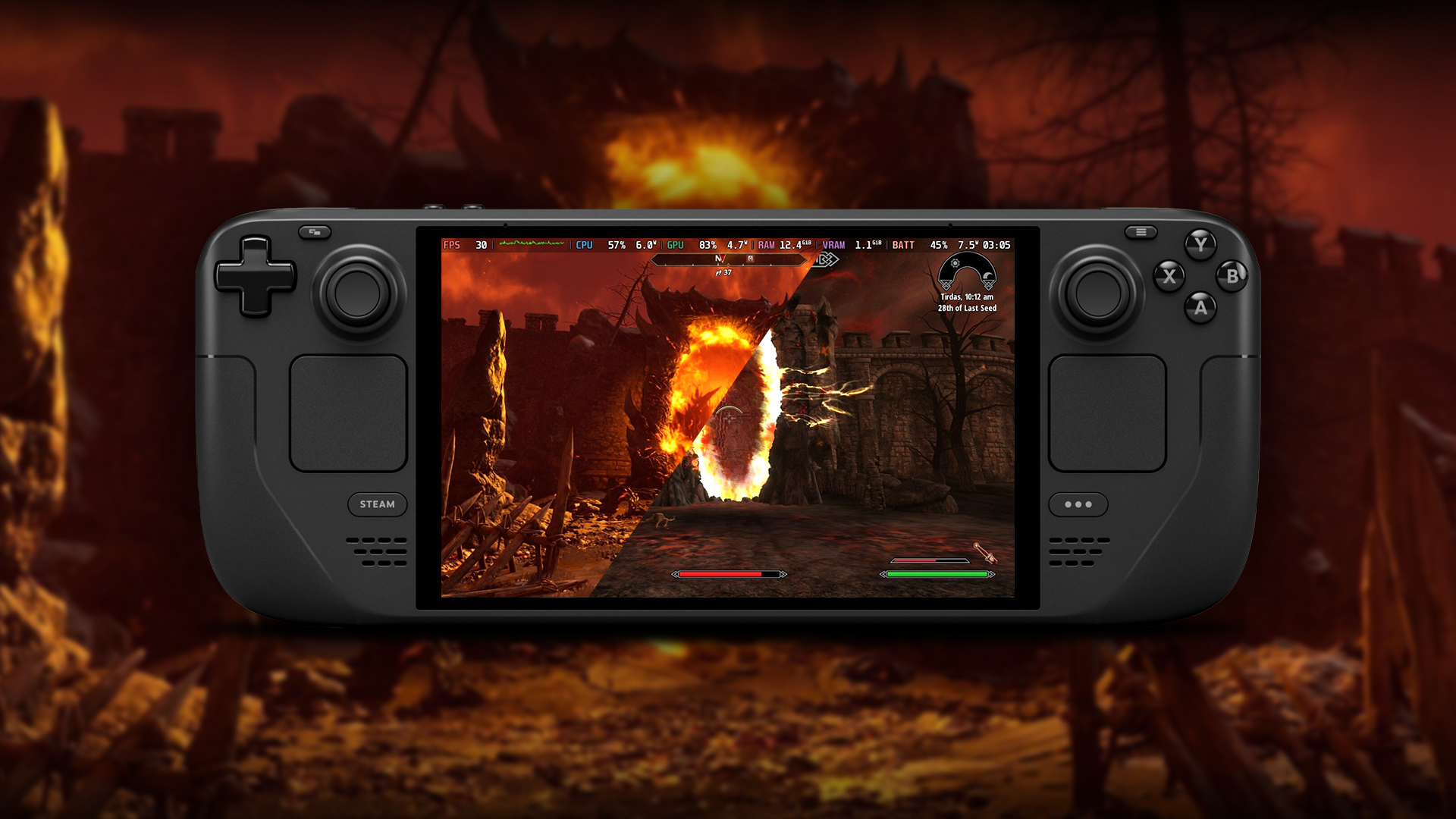
Dragon Quest 3 HD-2D Remake is as Faithful as You Could Ask
The HD-2D art style is almost like a cheat code for remakes, because it captures the spirit of classic RPGs while modernizing them in a way that remains true to their original forms. That’s certainly the case for the Dragon Quest games, which are ripe for remakes in this vein and one reason why the initial announcement of Dragon Quest 3 was such a big deal. Now, after three years of radio silence, I was finally able to see the Dragon Quest 3 remake first-hand and despite the new graphical update, it’s exciting to see that this is very much a faithful recreation of the decades-old original.
I got to play roughly 45 minutes of Dragon Quest 3 HD-2D Remake on PlayStation 5, and as someone whose gaming life revolved around RPGs of its era, I certainly appreciate a good modernization of one. Much like other Square Enix HD-2D RPGs Octopath Traveler and Live-A-Live, it’s further proof that this direction is such an effective way to preserve the look and feel of classic pixel art with visual flourishes that are only made possible by today’s technology.
The demo starts early on in the story when the hero picks up a full party consisting of a Warrior, Cleric, and Mage. From the hero’s hometown of Aliahan, I ventured out onto the open region to travel to the northern town of Reeve. Here and in the overworld, the lighting and bloom effects give a pop to an already vibrant old-school look. Although the lay of the land remains the same, its redesign gives the world a greater sense of scale. Promontory Passage, which is the ruins that leads to the Dreamer’s Tower (the first dungeon), are a stark contrast from the original and the environmental details paint a much more lively picture that wasn’t previously possible. Even compared to the mobile remasters of Dragon Quest 3, the difference is night and day, yet it didn’t feel like I was playing a completely different game.
Unsurprisingly, gameplay mechanics are largely preserved with turn-based battles that unfold after choosing actions for each party member. Strategizing with spells and attacks in the hope they line up to take out enemies before they inflict too much damage on your party is the Dragon Quest way. Although I was only playing early levels with a limited number of options, I already know that because of its branching class-based system, Dragon Quest 3 can definitely ramp up in complexity. I regrettably killed many adorable Slimes in my short time playing, but facing Toadys, Bubble Slimes, and Stark Ravens in groups (and in succession when climbing several floors of Dreamer’s Tower) would be dangerous if I wasn’t smart with my spells and who I was targeting. So, I was happy to see this remake preserve the kind of difficulty that made the originals especially challenging.
Unlike those originals, which had a pop-up window in which battles took place, combat encounters transition to a full screen scene with some neat details. The party lines up before commands are issued, then it transitions to a pseudo-first-person viewpoint. While you don’t really get to see characters animate or attack in battle, there are at least a handful of new special effects when casting spells that weren’t there in previous versions. While the remake stays true to the originals in this respect, it’s one area where I hoped more inspiration would come through, to give party members a little more personality in combat.
And so, part of me wishes this remake was more drastic in its creative liberties and quality of life changes. The stiff character animations combined with the vivid HD-2D makeover don’t always work that well together, resulting in an uncanny valley effect that sometimes looks out of place. Combat also lacks snappiness – you can change the text box and battle speed to maximum but the awkward pacing from one attack to the next makes things a bit stilted. These seemingly minor blemishes really stand out, especially after other HD-2D RPGs, and I feel Dragon Quest 3 could better bridge the gap between modern and classic design principles.
Of course, ask 10 different people how far they think a remake should go in terms of changing the original and you’ll likely get 10 different answers, and regardless of these early shortcomings, I can still appreciate the fact that a classic 30-plus year old RPG is being revitalized in 2024. The heart of turn-based RPGs are timeless so even something like Dragon Quest 3, which remains steadfast in most of its original design with a very simple story, can still evoke the joy of the genre.
The difference is night and day, yet it didn’t feel like I was playing a completely different game.
It’s not a radical overhaul then, and if you’re coming fresh off other HD-2D games like Octopath Traveler 2 or Live-A-Live, you should set your expectations accordingly. But I do think it’s important to not just preserve older games with modern sensibilities but make them more approachable as time goes on. The HD-2D foundation once again proves to be nearly foolproof when it comes to recreating that classic charm and a great way to modernize an old RPG that many would not have otherwise revisited.
We’ll be able to see it all come together when Dragon Quest 3 HD-2D Remake launches for PlayStation 5, Xbox Series X and S, Nintendo Switch, and PC on November 14 this year. On top of that, Dragon Quest 1 and 2 HD-2D Remakes are also set to release sometime in 2025, completing the original Erdrick triology in the series.







